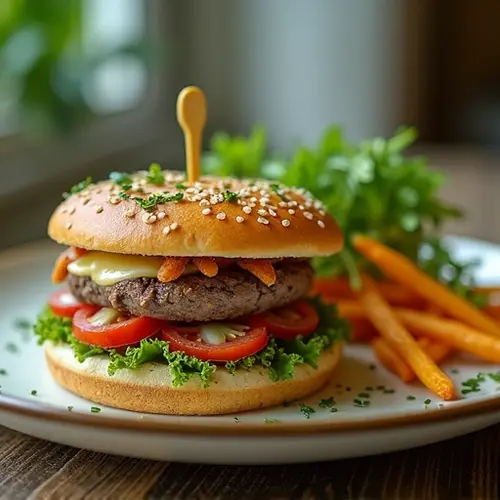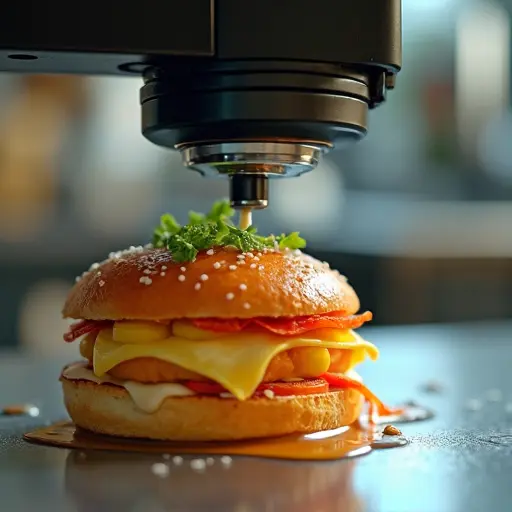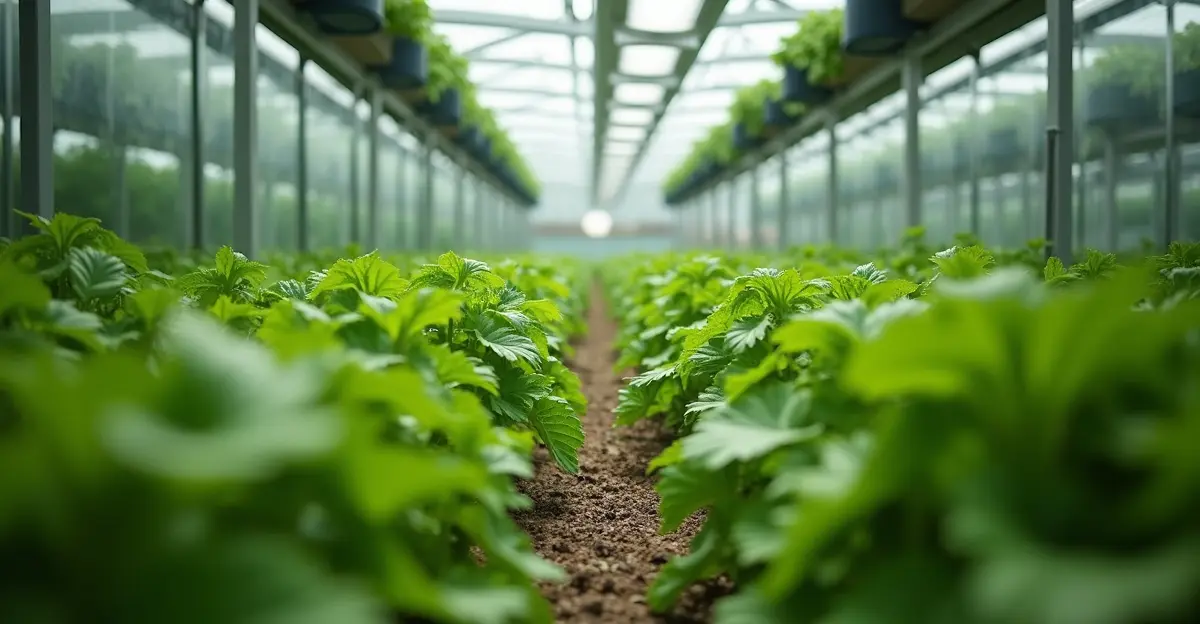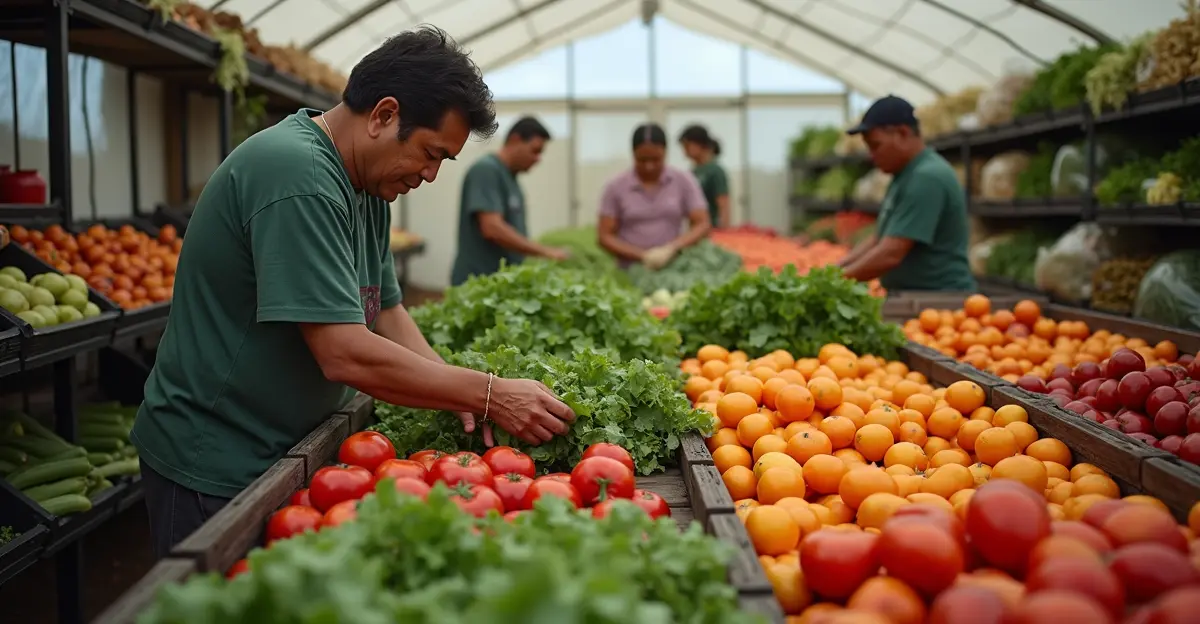By 2040, synthetic proteins and advanced food labs will transform global food security through cellular agriculture and precision fermentation, offering sustainable alternatives to traditional farming with reduced environmental impact.

The Food Revolution of 2040
By 2040, the global food landscape will be transformed by synthetic proteins and advanced food laboratories, offering solutions to the world's most pressing food security challenges. With nearly 10% of the global population currently undernourished and the need to feed 10 billion people by 2050, the world requires a 50% increase in food production within 25 years. 'We're at a critical juncture where traditional agriculture alone cannot meet future demands,' says Dr. Elena Rodriguez, a food technology researcher at MIT. 'Synthetic biology and cellular agriculture represent our best hope for sustainable food security.'
Cellular Agriculture: Meat Without Animals
Cellular agriculture has evolved dramatically since the first €250,000 cultured beef burger in 2013. Today, companies are producing everything from chicken to seafood using tissue engineering techniques. According to Nature Food, cultured chicken is now available for as little as S$4 per serving in Singapore, with costs continuing to drop as technology improves. The production process involves isolating specific cell types, growing them in bioreactors with nutrient-rich media, and using 3D scaffolds or bioprinting to replicate natural textures.
'What started as a scientific curiosity has become a viable industry,' notes Mark Post, creator of the first lab-grown hamburger. 'We're now seeing production facilities that resemble meat breweries rather than traditional laboratories.' Investment in this sector has surged, with venture capital reaching US$1.9 billion in 2021 alone, according to industry reports.
Precision Fermentation: The Microbial Revolution
Beyond cellular agriculture, precision fermentation represents another major innovation. This technology uses genetically engineered microbes to produce proteins and ingredients traditionally sourced from animals. McKinsey analysis reveals that fermented novel proteins represent a massive $100-150 billion annual market opportunity by 2050, potentially accounting for 4% of total protein production.
The process involves programming microorganisms like yeast or bacteria to produce specific proteins through fermentation. 'We're essentially teaching microbes to become tiny protein factories,' explains Dr. Sarah Chen, CEO of BioFood Innovations. 'This approach uses significantly less land and water than traditional agriculture while eliminating many of the environmental impacts.'
Food Labs of the Future
By 2040, food laboratories will have evolved into sophisticated production facilities that combine multiple technologies. These facilities will integrate cellular agriculture, precision fermentation, and advanced bioprinting to create complete food products. Modern food labs already use techniques from regenerative medicine and synthetic biology to create products that match conventional counterparts in sensory, nutritional, and structural qualities.
'The food lab of 2040 won't look like a sterile laboratory,' predicts food futurist Benjamin Rossi. 'It will resemble a modern brewery or pharmaceutical facility, producing food in controlled environments that eliminate weather dependencies and supply chain disruptions.' These facilities offer greater food security through modular manufacturing that reduces exposure to climate risks and disease outbreaks inherent in traditional agriculture.
Environmental and Economic Benefits
The shift toward synthetic proteins offers significant environmental advantages. Traditional livestock farming accounts for approximately 14.5% of global greenhouse gas emissions, while cellular agriculture and precision fermentation can reduce these emissions by up to 96%. Land use requirements are also dramatically lower – cultivated meat requires up to 99% less land than conventional beef production.
Economically, the transition presents both challenges and opportunities. While production costs remain higher than traditional proteins (currently about 10x higher), process improvements and redesigned bioreactors could reduce costs by 50% in the coming years. Research indicates that scaling this industry requires approximately $250 billion in cumulative infrastructure investments by 2050, but the potential returns are substantial.
Challenges and Future Outlook
Despite the promising advancements, several challenges remain. Regulatory approval processes vary significantly between countries, with Singapore leading the way in commercial approvals while other nations proceed more cautiously. Consumer acceptance also represents a hurdle, though surveys show increasing openness to alternative proteins, particularly among younger generations.
'The biggest challenge isn't technological – it's cultural and regulatory,' observes food policy expert Dr. Maria Gonzalez. 'We need to build public trust and establish clear safety standards while ensuring these technologies benefit all segments of society.'
Looking toward 2040, the integration of artificial intelligence and machine learning will further optimize production processes, while advances in 3D bioprinting will enable the creation of more complex food structures. The convergence of these technologies promises to revolutionize how we produce and consume food, potentially ending world hunger while dramatically reducing agriculture's environmental footprint.

 Nederlands
Nederlands
 English
English
 Deutsch
Deutsch
 Français
Français
 Español
Español
 Português
Português









